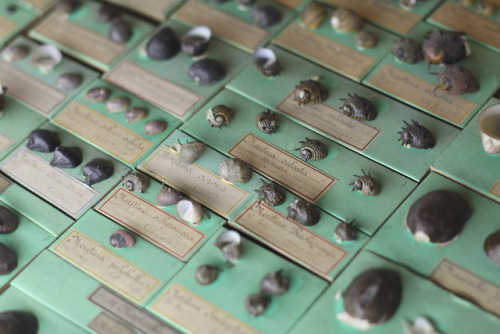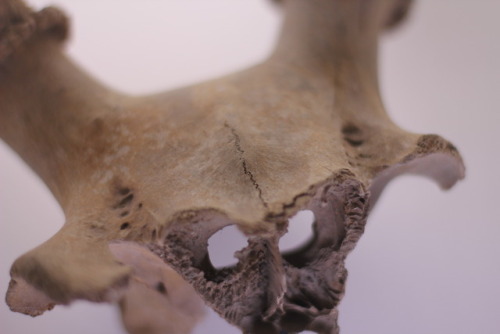Evisno - Majormajor
More Posts from Evisno and Others










I visited Nantes’ Natural History Museum.
White jellyfish by Alberto Montalesi Via Flickr:

I believe in free education, one that’s available to everyone; no matter their race, gender, age, wealth, etc… This masterpost was created for every knowledge hungry individual out there. I hope it will serve you well. Enjoy!
FREE ONLINE COURSES (here are listed websites that provide huge variety of courses)
Alison
Coursera
FutureLearn
open2study
Khan Academy
edX
P2P U
Academic Earth
iversity
Stanford Online
MIT Open Courseware
Open Yale Courses
BBC Learning
OpenLearn
Carnegie Mellon University OLI
University of Reddit
Saylor
IDEAS, INSPIRATION & NEWS (websites which deliver educational content meant to entertain you and stimulate your brain)
TED
FORA
Big Think
99u
BBC Future
Seriously Amazing
How Stuff Works
Discovery News
National Geographic
Science News
Popular Science
IFLScience
YouTube Edu
NewScientist
DIY & HOW-TO’S (Don’t know how to do that? Want to learn how to do it yourself? Here are some great websites.)
wikiHow
Wonder How To
instructables
eHow
Howcast
MAKE
Do it yourself
FREE TEXTBOOKS & E-BOOKS
OpenStax CNX
Open Textbooks
Bookboon
Textbook Revolution
E-books Directory
FullBooks
Books Should Be Free
Classic Reader
Read Print
Project Gutenberg
AudioBooks For Free
LibriVox
Poem Hunter
Bartleby
MIT Classics
Many Books
Open Textbooks BCcampus
Open Textbook Library
WikiBooks
SCIENTIFIC ARTICLES & JOURNALS
Directory of Open Access Journals
Scitable
PLOS
Wiley Open Access
Springer Open
Oxford Open
Elsevier Open Access
ArXiv
Open Access Library
LEARN:
1. LANGUAGES
Duolingo
BBC Languages
Learn A Language
101languages
Memrise
Livemocha
Foreign Services Institute
My Languages
Surface Languages
Lingualia
OmniGlot
OpenCulture’s Language links
2. COMPUTER SCIENCE & PROGRAMMING
Codecademy
Programmr
GA Dash
CodeHS
w3schools
Code Avengers
Codelearn
The Code Player
Code School
Code.org
Programming Motherf*?$%#
Bento
Bucky’s room
WiBit
Learn Code the Hard Way
Mozilla Developer Network
Microsoft Virtual Academy
3. YOGA & MEDITATION
Learning Yoga
Learn Meditation
Yome
Free Meditation
Online Meditation
Do Yoga With Me
Yoga Learning Center
4. PHOTOGRAPHY & FILMMAKING
Exposure Guide
The Bastards Book of Photography
Cambridge in Color
Best Photo Lessons
Photography Course
Production Now
nyvs
Learn About Film
Film School Online
5. DRAWING & PAINTING
Enliighten
Ctrl+Paint
ArtGraphica
Google Cultural Institute
Drawspace
DragoArt
WetCanvas
6. INSTRUMENTS & MUSIC THEORY
Music Theory
Teoria
Music Theory Videos
Furmanczyk Academy of Music
Dave Conservatoire
Petrucci Music Library
Justin Guitar
Guitar Lessons
Piano Lessons
Zebra Keys
Play Bass Now
7. OTHER UNCATEGORIZED SKILLS
Investopedia
The Chess Website
Chesscademy
Chess.com
Spreeder
ReadSpeeder
First Aid for Free
First Aid Web
NHS Choices
Wolfram Demonstrations Project
Please feel free to add more learning focused websites.
*There are a lot more learning websites out there, but I picked the ones that are, as far as I’m aware, completely free and in my opinion the best/ most useful.
![WATCH: Crystal Birth, A Beautiful Timelapse Of Metallic Crystals Forming In Chemical Solutions [video]](https://64.media.tumblr.com/a6b789bd547bb0fc1e3119df87332f1a/tumblr_oghrhqfMiX1rte5gyo2_500.gif)
![WATCH: Crystal Birth, A Beautiful Timelapse Of Metallic Crystals Forming In Chemical Solutions [video]](https://64.media.tumblr.com/0c08f977f51ba218837b72a94f7bbd69/tumblr_oghrhqfMiX1rte5gyo4_500.gif)
![WATCH: Crystal Birth, A Beautiful Timelapse Of Metallic Crystals Forming In Chemical Solutions [video]](https://64.media.tumblr.com/94f32be0db445db0cdfe2546b015295b/tumblr_oghrhqfMiX1rte5gyo1_500.gif)
![WATCH: Crystal Birth, A Beautiful Timelapse Of Metallic Crystals Forming In Chemical Solutions [video]](https://64.media.tumblr.com/333f1f1da60d5ff8500aa7a751dba6c4/tumblr_oghrhqfMiX1rte5gyo3_500.gif)
WATCH: Crystal Birth, a Beautiful Timelapse of Metallic Crystals Forming in Chemical Solutions [video]


Mathematics is full of wonderful but “relatively unknown” or “poorly used” theorems. By “relatively unknown” and “poorly used”, I mean they are presented and used in a much more limited scope than they could be, so the theorem may be well known, but only superficially, and its generality and scope can be very understated and underappreciated.
One of my favorites of such theorems was discovered around the 4th century by the Greek mathematician Pappus of Alexandria. It is known as Pappus’s Centroid Theorem.
Pappus’s theorem originally dealt with solids of revolution and their surface areas and volumes. This was all Pappus was able to figure out with the geometric proof methods available to him at the time. Later on, the theorem was rediscovered by Guldin, and studied by Leibniz, Cavalieri and Euler.
The theorem is usually split into two, one for areas and one for volumes. However, the basic principle that makes both work is exactly the same, though it is much more general in the case of areas on a plane, or volumes in space.
The invention/discovery of calculus eventually brought to the table much more general methods that made Pappus’s theorem somewhat limited in comparison.
Still, the theorem is based on a very clever idea that is quite satisfying both conceptually and intuitively, and brilliant in its simplicity. By knowing this key idea one can greatly simplify some problems involving volumes and areas, so the theorem can still be useful, especially when associated with methods from calculus.
Virtually all of the literature that mentions the theorem focus on solids of revolution only, as if the theorem was merely a curiosity, and they never really address why centroids would play a role. This is a big shame. The theorem is much more general, useful and conceptually interesting, and that’s why I’m writing this long post about it. But first, a few words on centroids.
Centroids
Centroids are the purely geometric analogues of centers of mass. They are a single point, not necessarily lying inside a shape, that defines the weighted “average position” of a shape in space. Naturally, the center of mass of any physical object with uniform density coincides with its geometric centroid, since the mass is uniformly distributed along the object’s volume.
Centers of mass are useful because they give you a point of balance: you can balance any object by any point directly under its center of mass (under constant vertical gravity). This comes from the fact the torques acting on the shape exactly cancel out in this configuration, so the object does not tilt either way.
Centroids exist for objects with any dimension you wish. A scattering of points has a centroid that is just their average position. In 1 dimension we have a line segment, whose centroid is always at its center. In 2, 3 or more dimensions, things get a bit trickier. We can always find the centroid by integrating all over the shape and weighting each point by that point’s position. This is generally a complicated enough problem by itself, but for simpler shapes this can be trivial.
Centroids, as well as centers of mass, also have the nice property of being additive: the union of two shapes has a centroid that is the weighted average of both centroids. So if you can decompose a shape into simpler ones, you can find its centroid without any hassle.
Pappus’s Centroid Theorems (for surfaces of revolution)
So, let’s imagine we have ourselves some generic planar curve, which we’ll call the generator. This can be a line segment or some arc of a circle, like in the main animation of this post, above. Anything will do, as long as it lies on a plane.
If we rotate the generator around an axis lying on its plane, and which does not cross the generator, it will “sweep” an area in space. Pappus’s theorem then states:
The surface area swept by a generator curve is equal to the length of the generator c multiplied by the length of the path traced by the geometric centroid of the generator L. That is: A = Lc.
In other words, if you have a generating curve with length c, and its centroid is at a distance a from the axis of rotation, then after a complete turn the generator will have swept an area A = 2πac, where L = 2πa is just the circumference of the circle traced by the centroid. This is what the first animation in this post is showing.
Note that in that animation we are ignoring the circular parts on top and bottom of the cylinder and cone, for simplicity. But this isn’t really a limitation of the theorem at all. If we add line segments for generating those regions we get a new generator with a different centroid, and the theorem still holds. Here’s what that setup looks like:
Try doing the math! It’s nice to see how things work out in the end.
The second theorem is exactly the same statement, but it deals with volumes. So, instead of a planar curve, we now have a closed planar shape with an area A.
If we now rotate it around an axis, the shape will sweep a volume in space. The volume is then just area of the generating shape times the length of the path traced by its centroid, that is, V = LA = 2πRA, where R is the distance the centroid is from the axis of rotation.
Why it works
Now, why does this work? What’s the big deal about the centroid? Here’s an informal, intuitive way to understand it.
You may have noticed that I drew the surfaces in the previous animations in a peculiar translucent way. This was done intentionally, not just to give the surfaces a physically “real” feel, but to illustrate the reason why the theorem works. (It also looks cooler!)
Here are the closed cylinder and cone after they were generated by a rotating curve:
Notice how the center of the top and bottom of the cylinder and the cone are a darker, denser color? This results from the fact that the generator is sweeping more “densely” in those regions. Farther out from the center of rotation, the surface is lighter, indicating a lower “density”.
To better convey this idea, let’s consider a line segment and a curve on a plane.
Below, we see equally spaced line segments of the same length placed along a red curve, perpendicular to it, in two different ways. Under the segments, we see the light blue area that would be swept by the line segment as it moved along the red curve in this way.
In this first case, the segments are placed with one edge on the curve. You can see that when the red curve bends, the spacing between the segments is not constant, since they are not always parallel to each other. This is what results in the different density in the “sweeping” of the surface’s area. Multiplying the length of those line segments by the length of the red curve will NOT give you the total area of the blue strip in this case, because the segments are not placed along the curve centered at their geometric centroids.
What this means is that the differences in areas being swept by the segment as the curve bends don’t cancel out, that is, the bits with more density don’t make up for the ones with a lower density, canceling out the effect of the bend.
However, in this second case, we place the segment so that its centroid is along the curve. In this case, the area is correctly given by Pappus’s theorem, because whenever there’s a bend in the curve one side of the segment is sweeping in a lower density and the other is sweeping at a higher density in a such a way that they both exactly cancel out.
This happens because that “density” is inversely proportional to the “speed” of each point of the line segment as it is moving along the red curve. But this “speed” is directly proportional to the distance to the point of rotation, which lies along the red curve.
Therefore, things only cancel out when you use the centroid as the anchor/pivot on the curve, which allows us to assume a constant density throughout the entire path, which in turn means there’s a constant area/volume being swept per unit of length traversed. The theorem follows directly from this result.
The same argument works in 3D for volumes.
Generalizations and caveats
As mentioned, the theorem is much more general than solids and surfaces of revolution, and in fact works for a lot of tracing curves (open or closed) and generators, as long as certain conditions are met. These are described in detail in the article linked at the end.
First, the tracing curve, the one where the generator moves along (always colored red in these illustrations), needs to be sufficiently smooth, otherwise you can’t properly define the movement of the generator along its extent. Secondly, the generator must be two dimensional, always lying on a plane perpendicular to the tracing curve. Third, in order for the theorem to remain simple, the curve and the plane must intersect at the centroid of the generator.
This means that, in two dimensions, the generator can only be a line segment (or pieces of it), as in the previous images. In this case, both the “2D volume” (the area) and “2D area” (the lateral curves that bound the area, traced by the ends of the segment) can be properly described by the theorem. If the tracing curve has sharp enough bends or crosses itself, then different regions may be covered more than once. This is something that needs to be accounted for via other means.
The immediate extension of this 2D case to 3D is perfectly valid as well, where the line segment gets replaced by a circle as a generator. This gives us a cylindrical tube of constant radius along the tracing curve in space, no longer confined to a plane. Both the lateral surface area of the tube and its volume can be computed directly by the theorem. You can even have knots as the curve!
In 3D, we could also have other shapes instead of a circle as the generator. In this case there are complications, mostly because now the orientation of the shape matters. Say, for example, that we have a square-shaped generator. As it moves along a curve it can also twist around, as seen in the animation below:
In both cases, the volume is exactly the same, and is given by Pappus’ theorem. This can be understood as a generalization of Cavalieri’s principle along the red curve, which also only works because we’re using the centroid as our anchor.
However, the surface areas in this case are NOT the same: the surface area of the twisted version is larger.
But if the tracing curve is planar (2D) itself and the generator does not rotate relative to the curve (that is, it remains “upright” all along the path), like in the case of surfaces of revolution, then the theorem works fine for areas in 3D.
So the theorem holds nicely for “2D volumes” (planar areas) and 3D volumes, but usually breaks down for surface areas in 3D. The theorem only holds for surface areas in 3D in a particular orientation of the generator along the curve (see reference).
In all valid cases, however, the centroid is the only point where you get the direct statement of the theorem as mentioned before.
Further generalizations
Since the theorem holds for 2D and 3D volumes, we can do a lot more with it. So far, we only considered a generator that is constant along the curve, which is why we have the direct expression for the volume. We actually don’t need this restriction, but then we have to use calculus.
For instance, in 3D, given a tracing curve parametrized by 0 ≤ s ≤ L, and a generator as a shape of area A(s), which varies along the curve in such a way that the centroid is always in the curve, then we can compute the total volume simply by evaluating the integral:
V = ∫0LA(s) ds
Which is basically a line integral along the scalar field given by A(s).
This means we can use Pappus theorem to find the volume of all sorts of crazy shapes along a curve in space, which is quite nifty. Think of tentacles, bent pyramids and crazy helices, like this one:
What we have here are five equal equilateral triangles positioned on the vertices of a regular pentagon. Their respective centroids lie on their centers, and since all of them have the same area the overall centroid (the blue dot) is exactly in the middle of the pentagonal shape, which is true no matter how you rotate the pentagon or the individual triangles.
This means we can generate a solid along the red curve by sweeping these triangles while everything rotates in any crazy way we want (like the overall pentagon and each individual triangle separately, as in the animation), and Pappus’s theorem will give us the volume of this shape just the same. (But not the area!)
If this doesn’t convince you this theorem is awesome and underappreciated, I don’t know what will.
So there you go. A nifty theorem that doesn’t get enough love and appreciation.
Reference
For a great, detailed and proper generalization of the theorem (which apparently took centuries to get enough attention of someone) see:
A. W. Goodman and Gary Goodman, The American Mathematical Monthly, Vol. 76, No. 4 (Apr., 1969), pp. 355-366. (You can read it for free online, you just need an account.)








5 Vital Lessons Scientists Learn That Can Better Everyone’s Life
“4. Following your intuition will never get you as far as doing the math will. Coming up with a beautiful, powerful and compelling theory is the dream of many scientists worldwide, and has been for as long as there have been scientists. When Copernicus put forth his heliocentric model, it was attractive to many, but his circular orbits couldn’t explain the observations of the planets as well as Ptolemy’s epicycles – ugly as they were – did. Some 50 years later, Johannes Kepler built upon Copernicus’ idea and put forth his Mysterium Cosmographicum: a series of nested spheres whose ratios could explain the orbits of the planets. Except, the data didn’t fit right. When he did the math, the numbers didn’t add up.”
There are a lot of myths we have in our society about how the greatest of all scientific advances happened. We think about a lone genius, working outside the constraints of mainstream academia or mainstream thinking, working on something no one else works on. That hasn’t ever really been true, and yet there are actual lessons – valuable ones – to be learned from observing scientists throughout history. The greatest breakthroughs can only happen in the context of what’s already been discovered, and in that sense, our scientific knowledge base and our best new theories are a reflection of the very human endeavor of science. When Newton claimed he was standing on the shoulders of giants, it may have been his most brilliant realization of all, and it’s never been more true today.
Come learn these five vital lessons for yourself, and see if you can’t find some way to have them apply to your life!










New Supernova Results: Is The Universe Not Accelerating?
“There actually is a nice result from this paper: it perhaps will cause a rethink of the standard likelihood analysis used by teams analyzing supernova data. It also shows just how incredible our data is: even with using none of our knowledge about the matter in the Universe or the flatness of space, we can still arrive at a better-than-3σ result supporting an accelerating Universe. But it also underscores something else that’s far more important. Even if all of the supernova data were thrown out and ignored, we have more than enough evidence at present to be extremely confident that the Universe is accelerating, and made of about 2/3 dark energy.”
Just a few days ago, a new paper was published in the journal Scientific Reports claiming that the evidence for acceleration from Type Ia supernovae was much flimsier than anyone gave it credit for. Rather than living up to the 5-sigma standard for scientific discovery, the authors claimed that there was only marginal, 3-sigma evidence for any sort of acceleration, despite having statistics that were ten times better than the original 1998 announcement. They claimed that an improved likelihood analysis combined with a rejection of all other priors explains why they obtained this result, and use it to cast doubt on not only the concordance model of cosmology, but on the awarding of the 2011 Nobel Prize for dark energy. Despite the sensational coverage this has gotten in the press, the team does quite a few things that are a tremendous disservice to the good science that has been done, and even a simplistic analysis clearly debunks their conclusions.
Dark energy and acceleration are real and here to stay. You owe it to yourself to find out why and how!

Uneasiness in Observers of Unnatural Android Movements Explained
It has been decades in the making, but humanoid technology has certainly made significant advancements toward creation of androids - robots with human-like features and capabilities. While androids hold great promise for tangible benefits to the world, they may induce a mysterious and uneasy feeling in human observers. This phenomenon, called the “uncanny valley,” increases when the android’s appearance is almost humanlike but its movement is not fully natural or comparable to human movement. This has been a focus of study for many years; however, the neural mechanism underlying the detection of unnatural movements remains unclear.
The research is in Scientific Reports. (full open access)

Quantum Tunneling
Quantum tunneling refers to the quantum mechanical phenomenon where a particle tunnels through a barrier that it classically could not surmount. This plays an essential role in several physical phenomena, such as the nuclear fusion that occurs in main sequence stars like the Sun. It has important applications to modern devices such as the tunnel diode, quantum computing, and the scanning tunneling microscope. The effect was predicted in the early 20th century and its acceptance as a general physical phenomenon came mid-century.
Tunneling is often explained using the Heisenberg uncertainty principle and the wave–particle duality of matter. Pure quantum mechanical concepts are central to the phenomenon, so quantum tunneling is one of the novel implications of quantum mechanics.
source

S-IC Built for Apollo 19
by Ian E. Abbott
-
 justanoldfashiontumblog liked this · 8 years ago
justanoldfashiontumblog liked this · 8 years ago -
 bjs2die4 liked this · 8 years ago
bjs2die4 liked this · 8 years ago -
 altenu liked this · 8 years ago
altenu liked this · 8 years ago -
 venomvip liked this · 8 years ago
venomvip liked this · 8 years ago -
 evisno reblogged this · 8 years ago
evisno reblogged this · 8 years ago -
 explorationimages reblogged this · 8 years ago
explorationimages reblogged this · 8 years ago